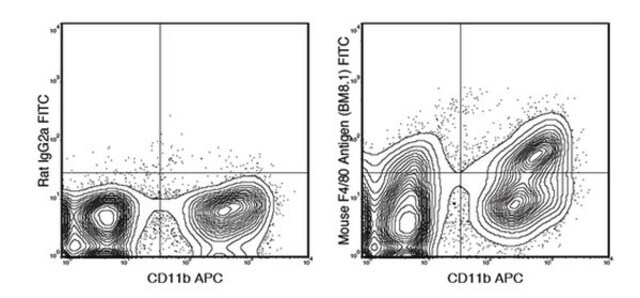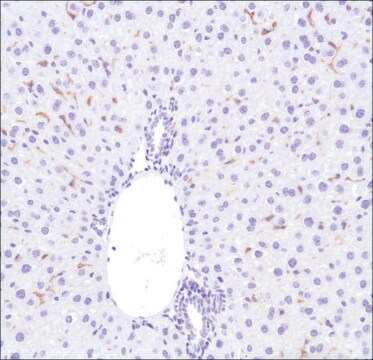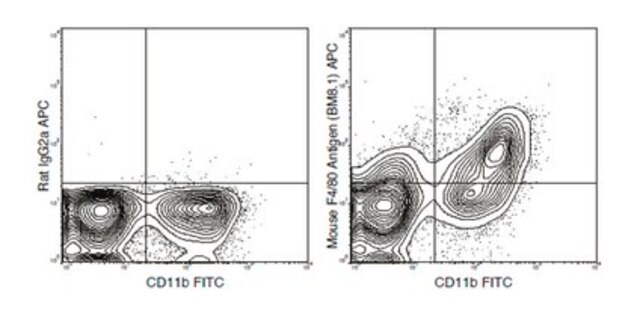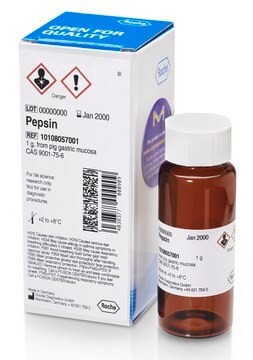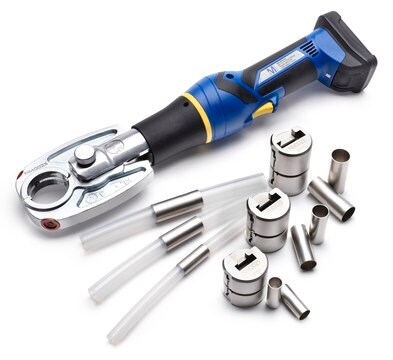CWA-1005
Anti-Mouse F4/80 (BM8.1) ColorWheel® Dye-Ready mAb
for use with ColorWheel® Dyes (Required, sold separately)
About This Item
Empfohlene Produkte
Biologische Quelle
rat
Qualitätsniveau
Antikörperform
purified antibody
Antikörper-Produkttyp
primary antibodies
Klon
BM8.1, monoclonal
Produktlinie
ColorWheel®
Form
lyophilized
Mol-Gew.
calculated mol wt 102.13 kDa
Speziesreaktivität
mouse
Verpackung
antibody small pack of 25 μL
Grünere Alternativprodukt-Eigenschaften
Waste Prevention
Designing Safer Chemicals
Design for Energy Efficiency
Learn more about the Principles of Green Chemistry.
sustainability
Greener Alternative Product
Methode(n)
flow cytometry: suitable
Isotyp
IgG1κ
Epitopsequenz
Extracellular domain
Protein-ID-Hinterlegungsnummer
UniProt-Hinterlegungsnummer
Kompatibilität
for use with ColorWheel® Dyes (Required, sold separately)
Grünere Alternativprodukt-Kategorie
Versandbedingung
ambient
Lagertemp.
2-8°C
Posttranslationale Modifikation Target
unmodified
Angaben zum Gen
mouse ... Adgre1(13733)
Allgemeine Beschreibung
Spezifität
Immunogen
Anwendung
Evaluated by Flow Cytometry in Mouse bone marrow cells.
Flow Cytometry Analysis: Staining of one million mouse bone marrow cells was performed using 5 μL of a 1:1 mixture of Cat. No. CWA-1005, Anti-Mouse F4/80 (BM8.1) ColorWheel® Dye-Ready mAb and Cat. No. CW-PE ColorWheel® activated Phycoerythrin (PE) Dye or an equivalent amount of PE-conjugated Rat IgG2b isotype control.
Note: Actual optimal working dilutions must be determined by end user as specimens, and experimental conditions may vary with the end user
Kompatibilität
Zielbeschreibung
Physikalische Form
Rekonstituierung
Lagerung und Haltbarkeit
Rechtliche Hinweise
Haftungsausschluss
Sie haben nicht das passende Produkt gefunden?
Probieren Sie unser Produkt-Auswahlhilfe. aus.
Ähnliches Produkt
Lagerklassenschlüssel
11 - Combustible Solids
WGK
WGK 2
Flammpunkt (°F)
Not applicable
Flammpunkt (°C)
Not applicable
Analysenzertifikate (COA)
Suchen Sie nach Analysenzertifikate (COA), indem Sie die Lot-/Chargennummer des Produkts eingeben. Lot- und Chargennummern sind auf dem Produktetikett hinter den Wörtern ‘Lot’ oder ‘Batch’ (Lot oder Charge) zu finden.
Besitzen Sie dieses Produkt bereits?
In der Dokumentenbibliothek finden Sie die Dokumentation zu den Produkten, die Sie kürzlich erworben haben.
Unser Team von Wissenschaftlern verfügt über Erfahrung in allen Forschungsbereichen einschließlich Life Science, Materialwissenschaften, chemischer Synthese, Chromatographie, Analytik und vielen mehr..
Setzen Sie sich mit dem technischen Dienst in Verbindung.